#Zyron
Explore tagged Tumblr posts
Text
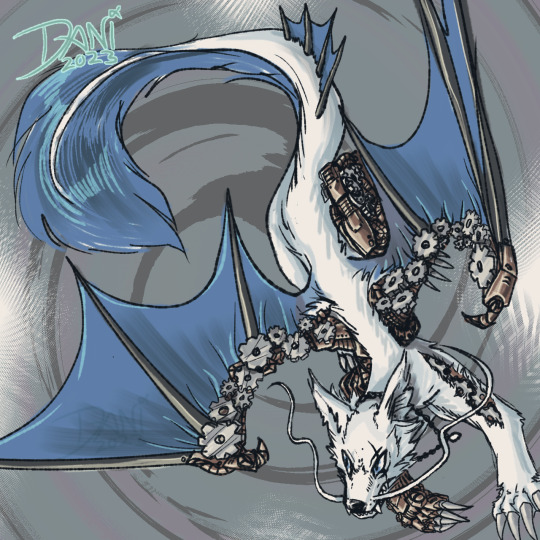
My ArtFight attack on @tails-artwork - it's Zyron the freaking awesome. ouo
#zyron#art fight#artfight2023#artfight attack#steampunk#just look at this dude#what a cool design#so happy I got to draw him#aaaaaaaaaaaaaaaaaaaaaaaaaaaaaaaaaa
5 notes
·
View notes
Text

Wanted to make a quick sketch of this guy on Team Grimm!

Givin' him the headcanon name: Zyron B.
60 notes
·
View notes
Text
Alfea Info
History: Created a few centuries after the formation of the magical planets, and was quick to grow in popularity and reputation because of the fairies that came out of it with total control of their powers. By the time the rewrite takes place, Faragonda is the current headmistress of the school with old school friend Griselda as the vice headmistress/head of discipline. As previously stated, all royals have an immediate place at the school should they choose to attend while other fairies have to have a sponsorship/earn a scholarship to secure a spot. One way to earn a scholarship is to pass an exam and the other is to be gifted with either a strong or rare magical source that needs more guidance to learn control of, Alfea being the only fairy school that has the resources/capabilities to do this. The school also has two options for scholarships, a three year option or a six year course that students can chose to take. The three year option just focus on basic stuff like the base form, charmix, and the principle of enchantix, however that transformation isn’t required to graduate from a three year course. The six year option focuses on the basic stuff as well as some more advanced stuff and enchantix is required to graduate from it.
Three Year option:
The third year curriculum is an option for fairies who aren’t interested in becoming guardian fairies but still want basic control and background info on enchantix if they decided to change their minds in the future.
The classes in this option are as follows:
. First year- basic magic theory, basic transmorphing(changing forms/appearance), basic spell casting, basic defense, understanding theory, basic magical history, basic potionology, and what being a fairy means
. Second year- intermediate magic theory, advanced transmorphing(changing forms/appearance), intermediate spell casting, intermediate defense, theory application 1, advanced magical history 1, intermediate potionology, and self reflection
. Third year- advanced magic theory, advanced spell casting, advanced defense, theory application 2, advanced magical history 2, advanced potionology, and the basics of enchantix
The only requirements for graduation if someone chooses this option are good grades(with one c but no ds or fs in terms of earth grading) and their charmix form.
Six Year option:
The six year curriculum is an option for fairies who are interested in becoming guardian fairies.
The classes in this option are as follows:
. First year- basic magic theory, basic transmorphing(changing forms/appearance), basic spell casting, basic defense, understanding theory, basic magical history, basic potionology, and what being a fairy means
. Second year- intermediate magic theory, advanced transmorphing(changing forms/appearance), intermediate spell casting, intermediate defense, theory application 1, advanced magical history 1, intermediate potionology, and self reflection
. Third year- advanced magic theory, advanced spell casting, advanced defense, theory application 2, advanced magical history 2, advanced potionology, and enchantix info
. Fourth year- studying in a place low in magic, foreign cultures, learning to not rely heavily on magic, and defense without magic
. Fifth year- advanced history 3, deeper magic theory 1, deeper application of theory 1, and magical plants 1
. Sixth year- deeper magic theory 2, deeper application of theory 2, magical plants 2, and magical animals 1 + 2
The requirements for graduation if someone chooses this option are good grades(with one c but no ds or fs in terms of earth grading) and their enchantix form.
Extra Curricular:
Like all schools Alfea offers elective classes that fall into categories but are not mandatory to most students.
The categories are as follows:
. Etiquette/manners(only required for nobles, future queens, or any future political students)
. Arts(ranging from painting/drawing to music/dance)
. Healing(for anyone with powers that give an opportunity to heal either people or nature)
. Study halls
. Culinary
. Basic Alchemy, Intermediate Alchemy, and Advanced Alchemy 1, 2, + 3
And…
. Free periods
Staff:
The staff of Alfea are some of the best professors/magi(the gender neutral term for magic users) in their fields and around the universe or their understudies.
Here is some information on them:
. Headmistress Faragonda- 400 years old, a fairy/witch hybrid, fairy of history, best history teacher from magix, can wield a little bit of every element but focuses on air, and elderly fairy with whitish-blue hair, dark blue eyes, and slightly tan skin
. Vice headmistress Griselda- 350 years old, fairy of shields, best defense fairy from Solaria, mostly creates her shields from the things around her(air, light, nature, ect…), tan skin, brown hair, brown eyes
. Professor DuFour- 260 years old, a fairy/vampire hybrid, fairy of manners, best etiquette professor in magix, grey hair, dark brown eyes, and slightly pale skin
. Professor Wizgiz- 250 years old, Leprechaun, magi of transmorphing, best transmorpher from Earth, pale yellow skin, green eyes, and light brown hair
. Professor Palladium- 150 years old, youngest teacher at Alfea, magi of greenery, best potions teach from Lynphea, starts off with fair skin, amber-brown eyes, and ginger hair before a species wide transformation takes place and he has fair skin, lighter amber-brown eyes, and lighter ginger hair with yellow highlights
. Professor Avalon- 153 years old, paladin of natural light, best alchemy teacher from Solaria, fair skin, grey eyes, and indigo hair with dark grey streaks
. Nurse Ofelia- 160 years old, fairy of healing, best healer from Lynphea, light tan skin, orange hair, and grey-blue eyes
. Miss Barbatea- 167 years old, fairy of books, best magi with overall knowledge from Zenith, slightly pale skin, purple hair, and brown eyes
. Chief Sfoglia- 275 years old, magi of heat, best cook from Magix, tan skin, blue-black hair, and light brown eyes
. Professor Pikass- 240 years old, magi of instruments, fair skin, dark grey eyes, violet with magenta bangs
. Professor Zyron- 230 years old, magi of crystals, a great teacher from Eracklyon, dark brown hair, grey eyes, and slightly tan skin
. Professor Medea- 180 years old, magi of metals, a great alchemy teacher from Melody, pale skin, dark blue hair, and brown eyes
. Professor Jass- 300 years old, magi of earth, a great teacher from Andros, dark brown hair, light brown skin, and light blue eyes
What the Staff Teach:
. Headmistress Faragonda- basic magic theory, basic magical history, what being a fairy means, advanced magical history 1, advanced magic theory, and enchantix info
. Vice headmistress Griselda- basic spell casting, basic defense, intermediate spell casting, intermediate defense, advanced defense, and defense without magic
. Professor DuFour- self reflection, Arts, and Etiquette/manners
. Professor Wizgiz- basic transmorphing(changing forms/appearance), and advanced transmorphing(changing forms/appearance)
. Professor Palladium- basic potionology, intermediate potionology, and magical plants 1
. Professor Avalon- theory application 1, theory application 2, deeper application of theory 2, Basic Alchemy, Intermediate Alchemy, and Advanced Alchemy 1, 2, + 3
. Nurse Ofelia- Healing and school’s nurse
. Miss Barbatea- understanding theory, foreign cultures, deeper magic theory 1, and Study halls
. Chief Sfoglia- Culinary and school’s chief
. Professor Pikass- deeper magic theory 2 and deeper application of theory 1
. Professor Zyron- advanced potionology and advanced spell casting
. Professor Medea- intermediate magic theory and advanced history 3
. Professor Jass- advanced magical history 2, magical plants 2, and magical animals 1 + 2
#percy jackson#percy jackson crossover#percy jackson rewrite#winx club#winx club crossover#winx rewrite#winx alfea#winx faragonda#winx griselda#winx dufour#winx wizgiz#winx palladium#winx avalon#winx ofelia#winx barbatea#winx sfoglia#winx pikass#winx zyron#winx medea#winx jass#those last four are on the wiki page too#Wings of Destiny
13 notes
·
View notes
Text
oc shenanigans





Ocs featured:
Nefari, Yuko, Zhanji, Ruth, Marsha, Zyron and Jester
5 notes
·
View notes
Text

Late post. Gonna feature some of my artfight OC's in preparation for next artfight or just sharing my OCs in general.
Meet Zyron my birdfolk character based off a bluejay bird
#artists on tumblr#artwork#digital art#dnd#fantasy#dnd character#dnd oc#artfightteamstardust#artfight2024#artfight#oc artwork#oc#oc art#my ocs#original character#my art#drawing#blue jays#animal illustration#bird art#birbs#nature#animals#birdfolk
10 notes
·
View notes
Text
Heart and Sole: A Tri-Theory Literary Critique of Gatmaitan's Sandosenang Sapatos
Written by: Delos Santos, Cindy Etom, Airah Clare Nufable, Cleshen Panal, Mark Jade Pido, Zyron Sabado, Clark Ivan Santos, Hannah Levee
“Alay ko ang kuwentong ito sa lahat ng batang kinapos ng damdamin at kaluluwa, at sa kanilang nagkulang ng isang kamay, isang paa, isang daliri, isang mata. [I dedicate this story to all of the children who are lacking in feeling and soul, and to those who are missing a hand, a foot, a finger, and an eye.]” — Luis P. Gatmaitan, M.D.
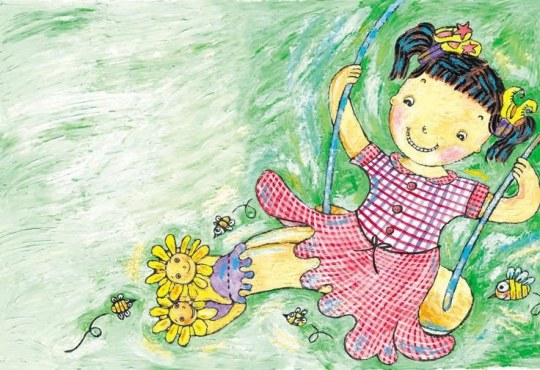
In Gatmaitan's poignant narrative, "Sandosenang Sapatos," the readers are introduced to the world of a character called “Tatay”, a skilled shoemaker renowned in their town for crafting exquisite footwear. The story revolves around the central character, Karina, Tatay's daughter, who grows up surrounded by the intricacies of her father's craft. In this literary critique, the readers will explore the narrative through the lenses of Formalism, Psychological, and Biographical theories, in order to unravel the layers of symbolism, character motivations, and the profound influence of the author's own experiences on the story itself.
Formalism involved scrutinizing the story's structure, language, and stylistic choices. Gatmaitan's portrayal of Tatay's craftsmanship, the vivid descriptions of the shoes, and the recurring motif of footwear become essential elements to explore. On the other hand, through the lens of Psychological theory, the readers analyze the characters' inner workings and motivations. The emotional journey of the characters, especially Susie, Karina's sister who was born without feet, opens avenues to understand the psychological impact of physical differences and the resilience of the human spirit.
Meanwhile, Biographical theory provides a unique perspective as we consider Gatmaitan's own background and experiences. The author, who is also a pediatrician, infuses the narrative with themes of love, acceptance, and the complexities of parenthood. The biographical lens offers insights into how Gatmaitan's professional expertise and personal encounters may have shaped the portrayal of medical challenges and familial bonds within the story.
Through these three lenses, the readers aim to unravel the complexities of "Sandosenang Sapatos," examining not only its formal elements and psychological depth, but also understanding the impact of Gatmaitan's own life experiences on the creation of this heartfelt short story.
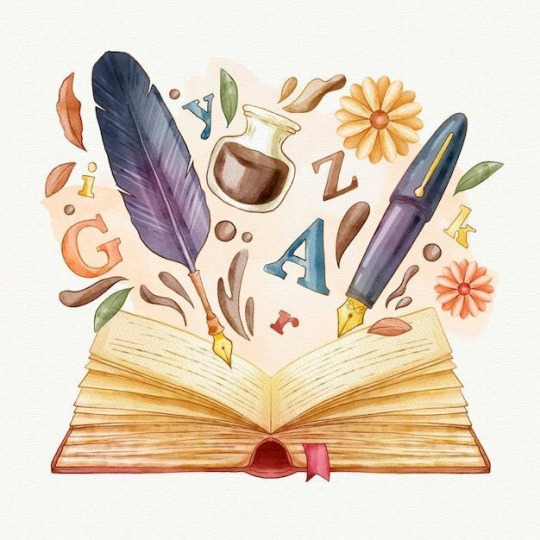
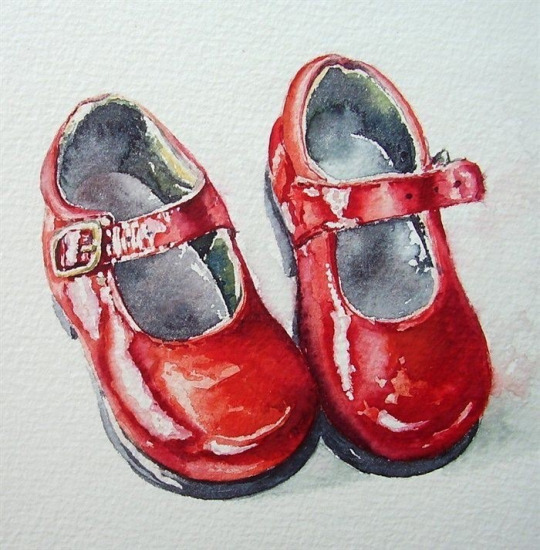
First, for the formalistic approach, the short story used the first person as its point of view. It utilized the pronouns “ako [I]”, “ akin [my]”, and “kami [we]” throughout the story. With these pronouns, the readers analyzed that the story was written based on the character’s perspective, which is Karina. Along with this, as the story progresses, the readers observe that the events are based on her experiences with her classmates, other people, and mainly, her family.
For the setting, the story is situated in a town where Karina and her family live. Their home symbolizes love and strength, showing how they support each other despite the challenges. Through the setting, the story explores the contrast between dreams and reality, particularly through Susie's dreams of beautiful shoes and the harsh realities of her disability. The setting not only provides a backdrop but also deeply influences the emotional atmosphere, allowing the readers to empathize with the characters journey of love, loss, and acceptance within their family and community.
For the structure, it is characterized by its plot, set in a town where the characters are introduced. As the plot develops, the readers can gain insights on what is happening in the family and the significance of the shoes as a symbol in the story through the first-point of view of the narrator. The narrator's viewpoint focuses on her interactions with her father and sister, Susie, providing readers with a deeper understanding of the events unfolding within the family. Additionally, symbolism is woven into the narrative, with shoes representing various themes, including identity, hope, and the bond between family members. Also, the setting provides context for the events that unfold, including societal judgment and the challenges faced by Susie's disability. Through its structure, the story effectively conveys its themes and messages, highlighting the importance of unconditional love and acceptance within a family amidst life's trials and tribulations.
For the characters, it involves Karina, her father, her mother, and Susie. Karina, who is the main character and the one who is narrating the story, is a loving daughter and sister. She is willing to do anything to make her family happy, especially her father. She is willing to go beyond her limits just to fulfill her father's dream. This is evident in the part of the story when Susie was born with deformities, and now cannot fulfill her father's dream for her to become a ballerina. Now as a loving daughter, even if she did not like ballet, she still decided to persuade her mother to enroll her in a ballet school. Moreover, Karina is a loving sister. Despite Susie's deformities, she did not treat her differently. She is willing to adjust and stand up for her. She became her wheelchair assistant and defender against her bullies. Furthermore, Susie’s condition never became a hindrance for them to make a strong bond. They found a lot of games that did not require the use of feet. With Karina’s statement, which is “Lagi nga niya akong tinatalo sa sungka, jackstone, scrabble, at pitik-bulag. [She always beats me in sungka, jackstone, scrabble, and pitik-bulag.]”, the readers understood that they really have a good relationship with each other.
In addition, Karina’s father, a supporting character, is a skillful shoemaker. He is well-known in their town for making creative, durable, and excellent shoes. It can be supported with Karina’s statement, which is “Ayon sa mga sabi-sabi, tatalunin pa raw ng mga sapatos ni Tatay ang mga sapatos na gawang-Marikina. [From what we heard, my father’s shoes were so much better than the shoes made in Marikina.]”. Tatay is also a loving father. Aside from the fact that he always made shoes for Karina on different occasions, he showed his love for his family in many ways. He is always willing to protect them from other people, especially when Susie got bullied by a guy when they went on a picnic. He even told Susie one bed time that he and her mother will always love her even if she had no feet. Most importantly, his love is unconditional. Knowing Susie’s condition, he still made shoes for her even if he knows that Susie cannot wear these. With his love and talent for shoemaking, he also wants Susie to be part of what he always does by making her beautiful shoes.
Karina’s mother, who is also a supporting character, is a loving mother. Same with her father, she is willing to keep her family from harm and did not treat Susie differently. The last character, who is Susie, is Karina’s little sister. Even if it is not her perspective, she is also considered as a main character since the story mainly revolves around her. Susie is born with deformities, in which she had no feet. However, her family showered her with the love she needed, and even more. Her family always makes her feel that she is very special and there is nothing wrong with her.
Each character has a significance in the story since each of them contributes to it as a whole. For the plot, the story introduces Karina’s father as a famous shoemaker in their town. His father made her many exceptional shoes for every occasion such as Christmas, birthdays, school openings. Now as the story goes on, it introduces her mother who got pregnant when she was in second grade. After her little sister, Susie, was born, they found out that she had deformities. This marks the beginning of the conflict, as her father's dream for Susie, to become a ballerina, crashes. To sum all things, each character really has a crucial role that makes the story as a whole.
Furthermore, the use of imagery is present in the story. It is highly evident when Karina described the shoes that her father made for Susie. She used the description such as “dilaw na tsarol na may dekorasyong sunflower sa harap [yellow patent leather shoes with sunflower upfront]”, “kulay pulang velvet na may malaking buckle sa tagiliran [red velvet shoes with a big side buckle]”, “asul na sapatos na bukas ang dulo at litaw ang mga daliri [blue open-toed shoes with her own toes peeking through]”, and many more. With this, while the readers were reading the story, the words used by Karina helped them to have an image painted in their minds on what the shoes would look like. Moreover, imagery is also used when Karina and her family went to the park for a picnic, and encountered a guy that criticized Susie for her condition. With the statement “Biglang namula si Tatay sa mga narinig. Tumikom ang mga kamao. [My father turned red. He clenched his fist.]”, the readers can visualize her father’s face in that situation. Through this imagery, the readers can imagine how mad he was with the guy that insulted his daughter.
In summary, "Sandosenang Sapatos" employs a formalistic lens that brings out the narrative's core. The use of first-person perspective, with pronouns like "ako" and "akin," roots the story in Karina's viewpoint, highlighting her experiences with family and the town. The setting, portraying a town marked by love and resilience, contrasts dreams and realities, notably Susie's aspirations against the challenges of her disability. The plot unfolds dynamically, shedding light on family dynamics and the symbolic role of shoes. Characters, from Karina's devotion to her father's shoemaking and Susie's resilience, play essential roles. Imagery, especially in describing Susie's shoes and intense moments, offers a visual connection for readers. "Sandosenang Sapatos" is a straightforward exploration of love, identity, and acceptance, prompting readers to engage with the emotional aspects within family and societal contexts.


Second, looking at the text using a psychological lens imparted to the readers what may be going through the characters' minds as the story progresses, especially the turmoil created by physical differences, and how familial love and the indomitable human will rise above these difficulties.
The characterization of Tatay in the story, particularly his passion for shoemaking and love of family, is a recurring theme, despite people insulting his daughter Susie as seen in the line “Tingnan n’yo o, puwedeng pang-karnabal ‘yung bata!”, or being the topic of gossip, as people try to create fantastical and unbelievable reasons why Susie was born without feet, he continues to create shoes for her regardless, showing his motivation to provide and care for his family, and his motivation to push through struggles in life.
Karina also follows the same thread, and this can be shown through her self-sacrifice, wanting to learn ballet to fulfill the dreams of her father, playing with her sister through games that do not need feet, defending her from bullies, pushing her wheelchair, and generally assisting her. Her dedication and grit once again triumphs over difficulties.
Nanay’s character also shows resilience and love all in the midst of all the adversity. “Nagkaroon kasi ako ng impeksyon anak.” Her inability to stop Susie's illness causes her to feel guilty and sad. She also experiences psychological effects from the gossip and judgment from society over Susie's condition, including a strong desire to protect her daughter from harm and protective instincts.
Susie is portrayed as a strong, creative person who finds comfort and happiness in her aspirations and goals. Susie's fantasies about these intricate and exquisite shoes show the psychological effects of growing up with a physical impairment. She may be using these dreams as a coping method, escaping the confines of her physical reality and finding solace in an idealized version of herself with a perfect pair of feet.
The recurring theme of Susie's dreams about shoes also indicate a longing for a sense of normalcy and the desire to experience activities she might not be able to in reality, such as wearing the ballet shoes her father wants her to have. Her ability to find joy in small moments, and her creative imagination are notable aspects of her character that reflected these coping strategies that yielded her to have a positive outlook in life.
The psychological lens reveals in the narrative the struggle, coping strategies, resilience and love of the characters. Tatay with his undying determination of making shoes for Susie despite her complications, Karina sacrificing her own ideals just to make his father’s wish come true, Nanay grapples with the emotional weight of Susie's condition and societal judgments, while Susie uses her dreams and imagination as a means of navigating and finding happiness in a world that sometimes fails to understand her.
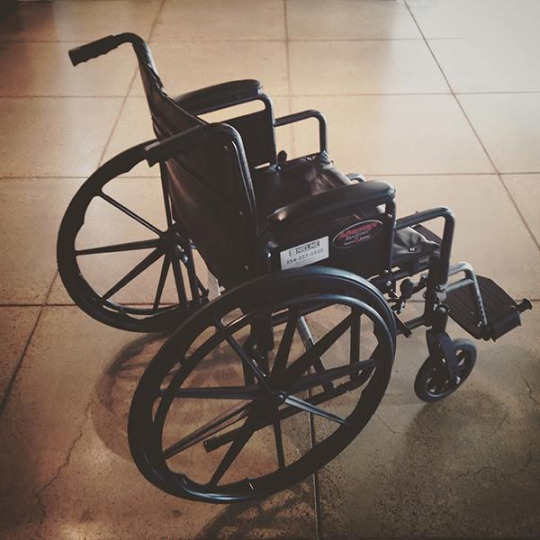
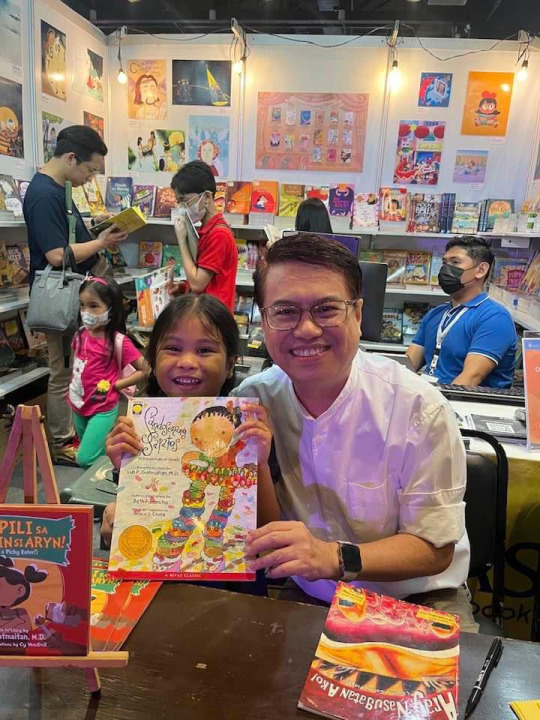
Finally, the readers analyze the short story through the third and last literary theory lens, which is the Biographical Lens. This lens unveils a deeper layer of understanding as the readers examine the author's life, experiences, and personal context. This lens allows proper analysis of how the author's unique background and journey may have influenced the narrative, characters, and thematic elements within the short story. In this case, the readers explore the life of Dr. Luis P. Gatmaitan, the Filipino author of “Sandosenang Sapatos”.
Luis P. Gatmaitan, M.D., widely known as “Tito Dok” to his readers, has written more than 40 children’s books. Aside from being a Filipino children’s author, Tito Dok is also an accomplished medical doctor specializing in pediatrics. Currently, he chairs the Philippine Board on Books for Young People (PBBY), and is part of the National Council for Children’s Television (NCCT) as a child development specialist (Monde, 2022). Both of these positions are highly notable, as they serve as evidence for Tito Dok’s passion for pediatric healthcare and literary education.
Most of Tito Dok’s books contain themes that revolve around differently-abled people, senility, adoption, coping with death, coping with cancer, childhood diseases, and children’s rights. One of his popular works is “Sandosenang Sapatos” or “A Dozen Pairs of Shoes”. This particular book has won him an award in the 2001 Don Carlos Palanca Memorial Awards for Literature, which are a set of literary awards for Philippine writers. Furthermore, “Sandosenang Sapatos” was named the 2005 Outstanding Book for Young People with Disabilities by the International Board on Books for Young People (IBBY), which showcases the global impact of Tito Dok’s work. Recently, the short story was also featured as a musical play, solidifying its place in the Philippine literary industry.
Tito Dok’s inspiration for writing this short story can be traced back to when he attended a training course in creating non-fiction books for young people in Japan. The author was amazed by how the Japanese people respected those with mobility issues, leading him to have an idea of writing about these kinds of people. One time, he had a patient who was born without feet. Tito Dok then thought, “What if this child was born to a father who worked as a shoemaker?" This then led to the writing of the aforementioned short story.
Tito Dok possesses a wide knowledge of medical information, which was evident in his writing. In his work “Sandosenang Sapatos,” the readers have read the part where Susie’s mother disclosed to her eldest, Karina, that she had German measles while she was carrying Susie, resulting in her youngest daughter to be born without feet. This particular scenario reflects the expertise of the author in the medical field. As a doctor himself, Tito Dok must have studied or witnessed that illnesses during pregnancy, such as German measles, could lead to birth defects (Leonor & Mendez, 2023).
In the short story, despite missing her lower limbs, Susie grew up in a loving and caring family who never treated her less for being differently-abled. The author came up with this particular character trait after observing that “Some children grew up to be physically whole but emotionally disabled, or physically disabled but physically whole”. The author was able to convey this personal message to the readers, instilling hope in others about physically challenged people like the short story’s Susie.
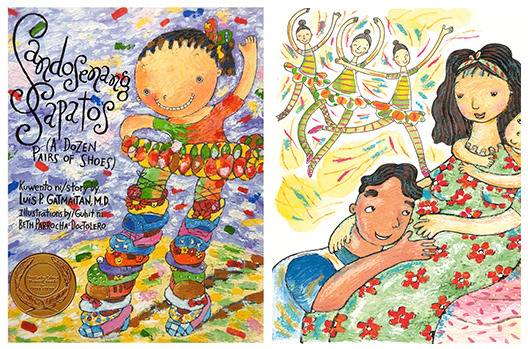
In conclusion, "Sandosenang Sapatos" by Luis P. Gatmaitan is a narrative that explores the concepts of human emotion, resilience, and familial love. The author's dedication, expressed in the heartfelt dedication to children facing physical challenges, sets the tone for a narrative rich in depth and compassion. Through the lenses of Formalism, Psychological theory, and Biographical insights, the readers have unraveled and given an in-depth critique and analysis of the work.
The lens of Formalism unveiled the structure of the story, with a first-person perspective amplifying Karina's experiences, while vivid descriptions of shoes become symbolic threads woven throughout the narrative. Psychological theory invited readers into the minds of characters, exposing their struggles, coping strategies, and unwavering love in the face of adversity. The characters - Karina, Tatay, Nanay, and Susie - each contribute significantly to the plot, portraying a resilient family facing life's trials with unconditional love.
And of course, the Biographical lens adds another layer of understanding, showcasing Dr. Gatmaitan's dual roles as a renowned pediatrician and a prolific children's author. His background in pediatric healthcare is reflected in the narrative's accurate portrayal of medical conditions, emphasizing the author's commitment to educating young minds. The story's origins in Tito Dok's encounter with a patient born without feet add a personal touch, infusing the tale with authenticity and empathy.
"Sandosenang Sapatos" stands as a testament to the power of storytelling to foster understanding, empathy, and hope. Dr. Gatmaitan's masterful blend of literary prowess and medical expertise creates a narrative that resonates beyond its pages, leaving an indelible mark on readers' hearts and minds. Through the holistic combination of formal elements, psychological depths, and biographical influences, the readers gain a comprehensive appreciation for the layers of meaning embedded in this heartfelt short story, celebrating the strength of the human spirit and the enduring bonds of family.
#sandosenangsapatos#literary criticism#literary critique#formalism#psychological approach#biological approach
2 notes
·
View notes
Text
Stay Charged Anywhere with a Wireless Power Bank
In today’s fast-paced world, staying connected is essential. Whether you're traveling, working remotely, or simply out and about, a wireless power bank ensures your devices never run out of battery.
Why Choose a Wireless Power Bank?
Unlike traditional chargers, a wireless power bank eliminates the need for tangled cables. Just place your smartphone on the charging pad, and it powers up effortlessly. This is especially convenient for men who prefer a minimalist, hassle-free charging solution.
Key Benefits of a Wireless Power Bank:
Portable & Compact – Easily fits in your pocket or bag for on-the-go charging. Fast Charging – Delivers quick power boosts to your devices when you need them the most. Universal Compatibility – Works with various smartphones, including iPhones and Android devices. MagSafe Technology – Ensures secure, efficient wireless charging for Apple users.
Upgrade Your Charging Experience
If you’re looking for a wireless power bank with high capacity and seamless performance, check out the MagSafe Power Bank 10000mAh from Zyron Tech. It’s designed for convenience, ensuring you stay powered up wherever you go.
Say goodbye to low battery anxiety and embrace effortless charging today!
1 note
·
View note
Text
Afrika'da Türk İhaları ile İnsani Yardım Misyonu
Türkiye’nin İHA Teknolojilerinde Öncü Gelişmeler Son yıllarda Türkiye, insansız hava aracı (İHA) teknolojilerinde önemli adımlar atarak global pazarda dikkat çekici bir konuma geldi. Bu bağlamda, Zyrone Dynamics gibi yerli firmalar, yenilikçi çözümleri ve yüksek performanslı ürünleri ile sektördeki rekabeti artırmaktadır. Döner Kanatlı İHA’lar: ZD100 ve ZD200 Zyrone Dynamics, döner kanatlı…
0 notes
Text

heppy new year 2025!!!!!1! :D
0 notes
Text
CNPJ: 54.270.907/0001-08
ESTE CNPJ É FRAUDULENTO
Data de registro: 11/03/2024
Registrado em nome de: “ZYRON SOLUCOES DIGITAIS LTDA“
73.19-0-03 - Marketing direto
Sociedade Empresária Limitada Este CNPJ dá suporte para sites fraudulentos
0 notes
Text
Stay Charged with Zyron Tech’s High-Performance USB-C Wall Charger
Looking for a potent yet easy-to-carry charger? Try Zyron Tech's USB-C Wall Charger. It quickly powers up all your gadgets. From phones to tablets or laptops, it's got you sorted. Great for trips due to its tiny size, and its smart charging function keeps your gadgets safe. Give your charging routine an upgrade with Zyron Tech now.

0 notes
Text

Cool Joe voice: Man why do I gotta stand by the freakiest guy on Team Grimm
34 notes
·
View notes
Text



*cutely hands you oc stuff and leaves*
5 notes
·
View notes
Text
115 CE
Library of Circlaria
Remikra Timeline

Wannonian Enhancement
Such gridlock was broken when Zyron, a spy for Wannonia, went inside Fort Mains undetected. There, he heard information about the Edoran Commander, Gerald Commonwell, who had designed and still possessed plans for the Edoran catapults. Zyron also learned of the location of Commonwell. The Wannonian spy returned to Tekon and reported this to Emperor Kamon II, who, in November 113 CE, dispatched an assassin named Milon, who went to Commonwell's location: in the King's Castle in Edora proper. Here, Milon entered undetected and located the office of Commonwell, who he then killed, before finding the plans on the Commander's desk and took them back to Tekon. It was in Tekon that an engineer named Carthos expanded on the stolen plans. Carthos enhanced the catapult idea by employing flaxweed for twine, which help to increase projectile range. He then placed his entire prototype on a rotating base for better aim, designed a counterweight to help wind up the catapult faster, and expanded on the length and width of the catapult arm to load bigger rocks. Such rocks were laced by spellcrafters with various forms of stunspells.
Implementation
In June 114 CE, the Wannonians attacked Fort Mains and surrounding territories, employing the new catapult design. The Edorans could not reach them with their catapults, nor could infantry eliminate the Wannonian catapult bases without sustaining massive casualties. In September, the South Wall of Fort Mains came down; and the Wannonians charged in. Outnumbered, the Edorans, once again, fled to the Correns.
Compensation and Solution
Under King Richard's command, various engineers were paid to retrieve and enhance upon the Wannonian catapult idea. The Edoran Kingdom did have jurisdiction over a forest of silver pines, located in the Northeast section of the Moorlands. With enhanced forms of spellfire crafting at the time, rubber-like material could be made from its sap and wood pulp; however, such a material was not nearly as durable as flaxweed, all of which was owned by the Wannonians.
Between November and December 114 CE, a man named Samual Damsen, disguised as a Moorlander, entered the gates of Fort Mains, where he noted how the Wannonian catapults were constructed. Before he, mistaken as a Moorlander, could be transported back to Wannonia as a slave, Damsen escaped and returned to Edora with such ideas; and between January and April of the next year, the Edorans began construction on a new fleet of catapults. These catapults were further enhanced with the widening of the throwing end of the catapult arm, which also served as a slingshot. Here, the sling would be held from the ground until the arm of the catapult was untwined, and would then be released, launching the projectile a great deal more distance than the Wannonian catapults. The projectiles were also different, in that each was a ball of gravel, in which each piece of gravel was crafted with a combination of varying degrees of stunspells. On the catapults themselves were grassy surfaces so that they could fold down and conceal themselves in the grasses of the Moorlands.
Concealment and Strategy
In May 115 CE, two divisions of the Edoran Army, under King Richard II's orders, stationed themselves in and around Fort Mains. The first division tunneled to the interior of the Fort, one to ten soldiers at a time, and hid in a variety of planned locations, undetected and coordinated. The second division constructed the catapult-slingshots at two-thirds the calculated maximum range from the Fort, folding them into the ground until the signal was given. Such a signal would be given from within the walls of Fort Mains, in the form of a spellfire flare, by the spellcrafter, Kerlin. In June 115 CE, the Edorans attacked. The first division launched their assault at midnight; and the Wannonian commander holding the Fort was immediately killed. Kerlin then launched the signal; and the second division outside the Fort erected their catapult-slingshots, launching their projectiles. After three days, the Wannonians either had fled or were killed; and the Edorans recaptured Fort Mains.
Assault from the Moorlands
At the same time, another Edoran division swept Eastward, trapping stationed Wannonians in the Corren Mountains. After three weeks, they surrendered and were taken prisoner by the Edorans. Meanwhile, another Edoran division swept Westward, taking the South part of the Linbraen Mountains while driving the Wannonians to the North. After eleven days of being cut off from the rest of the Wannonian forces, they surrendered.
The Fall of Kamon II
In September 115 CE, Edorans scaled the border walls and swept into Wannonian homeland, where they placed Tekon under siege. They demanded Emperor Kamon II to withdraw all Wannonian Legions from the North. When Kamon II refused, his closest advisor, Kentellus, abandoned him. Edorans then convinced poor Wannonian farmers to threaten to join Edorans in the eventual felling of the Imperial capital. Still refusing to surrender but having no other available options, Emperor Kamon II committed suicide by drinking poison. Within a week, the Imperial Court appointed Murstallar I to become the next Emperor; and in October 115 CE, after succeeding at negotiating the keeping of the Linbraen Mountains in exchange for charging no tariffs for the silver pines in that region, Murstallar I signed a peace treaty with the Edoran Kingdom, thus ending the war.
One year later, the Khaps drove Wannonian forces out of the Northern part of the Linbraens.
<- 112 CE <- || -> 123 CE ->
1 note
·
View note

